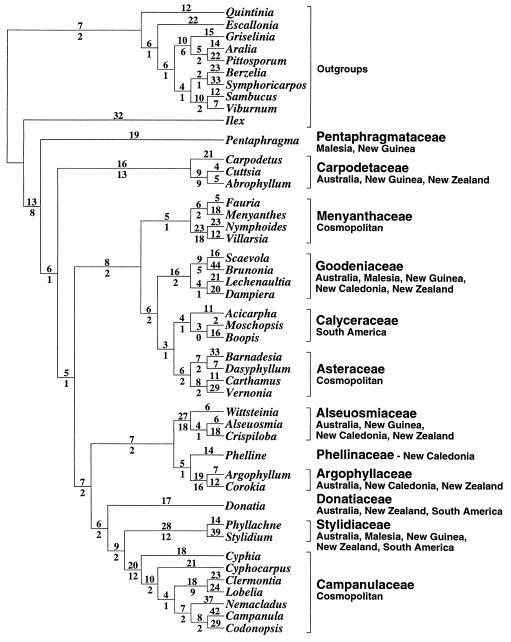Figure 1.
Phylogeny of the sunflower alliance of families reconstructed by parsimony analysis (21) of chloroplast DNA rbcL sequences. Numbers above the branches are branch lengths, and those below are measures of branch support, namely the number of extra steps necessary to lose a branch (25). The cosmopolitan Asteraceae are considered to be of South American or South American–Pacific origin (11, 14). Geographic origin of the Campanulaceae is unknown, but phylogenetically basal branches involve Africa, South America, and North America. The widespread Menyanthaceae comprise two groups with different distributions: one found mainly in Australia and the other primarily represented in the northern hemisphere. The Goodeniaceae also comprise a few species on islands of the Pacific, on tropical seashores, and in South America (presumably secondarily dispersed). Biogeographic analysis (14, 15, 24) of the family distributions indicates that the alliance originated in an area related to the Australasian region of today. Fossil evidence (11, 12) and the number of accumulated nucleotide substitutions in the rbcL gene (20) together place the time of origin in the Cretaceous, when Australasia was part of East Gondwana.

